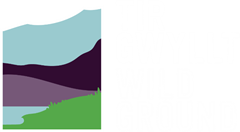This year was one of our busiest survey seasons yet, with 129 ponds being surveyed at least twice across 14 different sites between 20 March and 27 May.

As well as the introduction of new ponds to our surveying schedule, we also undertook a full suite of 6 survey visits at our Glascoed Nature Reserve to support licensing procedures.
In terms of environmental conditions, this spring turned out to be exceptionally dry, with Wales experiencing its driest March since 1944 (NRW, 2025). According to the Met Office, across England and Wales as a whole, only a quarter (25%) of the typical March rainfall was recorded across the month. In line with the dry conditions, Wales also had its sunniest spring on record, in terms of the number of sunshine hours clocked between 1 March and 28 May.
Whilst warm and dry spring conditions might be welcomed and enjoyed by us, this type of weather can bring about particular challenges for our resident amphibian populations.
The effects of drought can be numerous and wide-reaching, resulting in reduced habitat availability through the drying up of ponds, leading to fewer plants for egg-laying being available, and the desiccation of eggs/spawn as pond water levels reduce. It can also lead to a reduction in prey such as aquatic invertebrates, and, if ponds dry out completely, the death of tadpoles and newt larvae that are still in their aquatic lifecycle phase.
As anticipated due to the drought, we saw lower great crested newt peak counts at many of our sites this year, although some bucked the trend, with Maes y Grug returning its second highest peak count since 2003, with 83 GCN counted on the 10 April. We also counted a record number of anurans (frogs and toads) at Maes y Grug this season. As most of the ponds at Maes y Grug retained water throughout the dry spell, presumably, many of the amphibians were using them for foraging and a place of refuge as well as for breeding.
Newly created ponds at our Glascoed and Aberderfyn Nature Reserves are settling nicely, with post-construction turbidity having cleared, and the colonisation of abundant aquatic vegetation and plants favoured by newts for egg-laying.
Whilst overall GCN numbers were again variable across sites, this was an exceptional breeding year in terms of the lack of rain, and it is always worth remembering that the individuals encountered during our night-time surveys represent only a small fraction of the total population size at any given time. Great crested newts are known to be relatively long-lived, having been recorded living up to 14 years in the wild (Great Crested Newt Conservation Handbook, 2001). So, even if recruitment (the process by which new individuals are added to a population) is reduced for one year, there is every chance that a healthy metapopulation will have the resilience to withstand this, and breed successfully in subsequent years, providing environmental conditions are favourable.
We have lots of pond improvement work planned for this winter, including the construction of a new pond at our Brandie Brook Nature Reserve in Johnstown, and the removal of accumulated aquatic vegetation at our Glascoed and Trefnant reserves. The aim of this work is to further improve our local GCN/amphibian habitat, to enable them to increase their populations and support resilience to the impacts of threats including climate change, disease and habitat loss.
We lodge all of our GCN survey results with a national database which is overseen by Natural Resources Wales and hosted by Cofnod, the Local Environmental Records Centre. To date this database holds just under 45,000 amphibian records!
Big thanks as always to our intrepid survey team, and our brilliant volunteers for ensuring another successful year of surveys! Here’s looking forward to another busy amphibian survey season in 2026!
